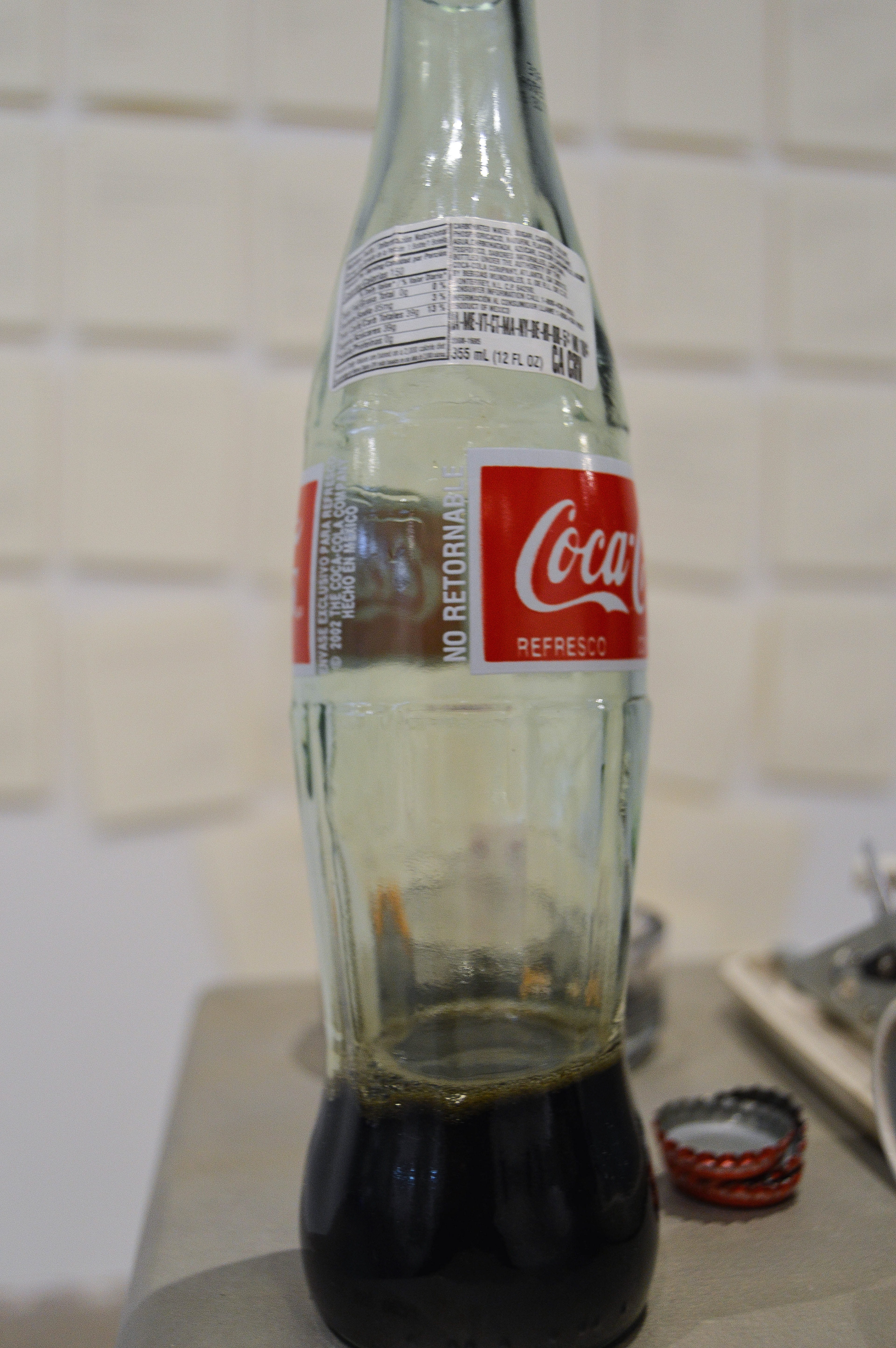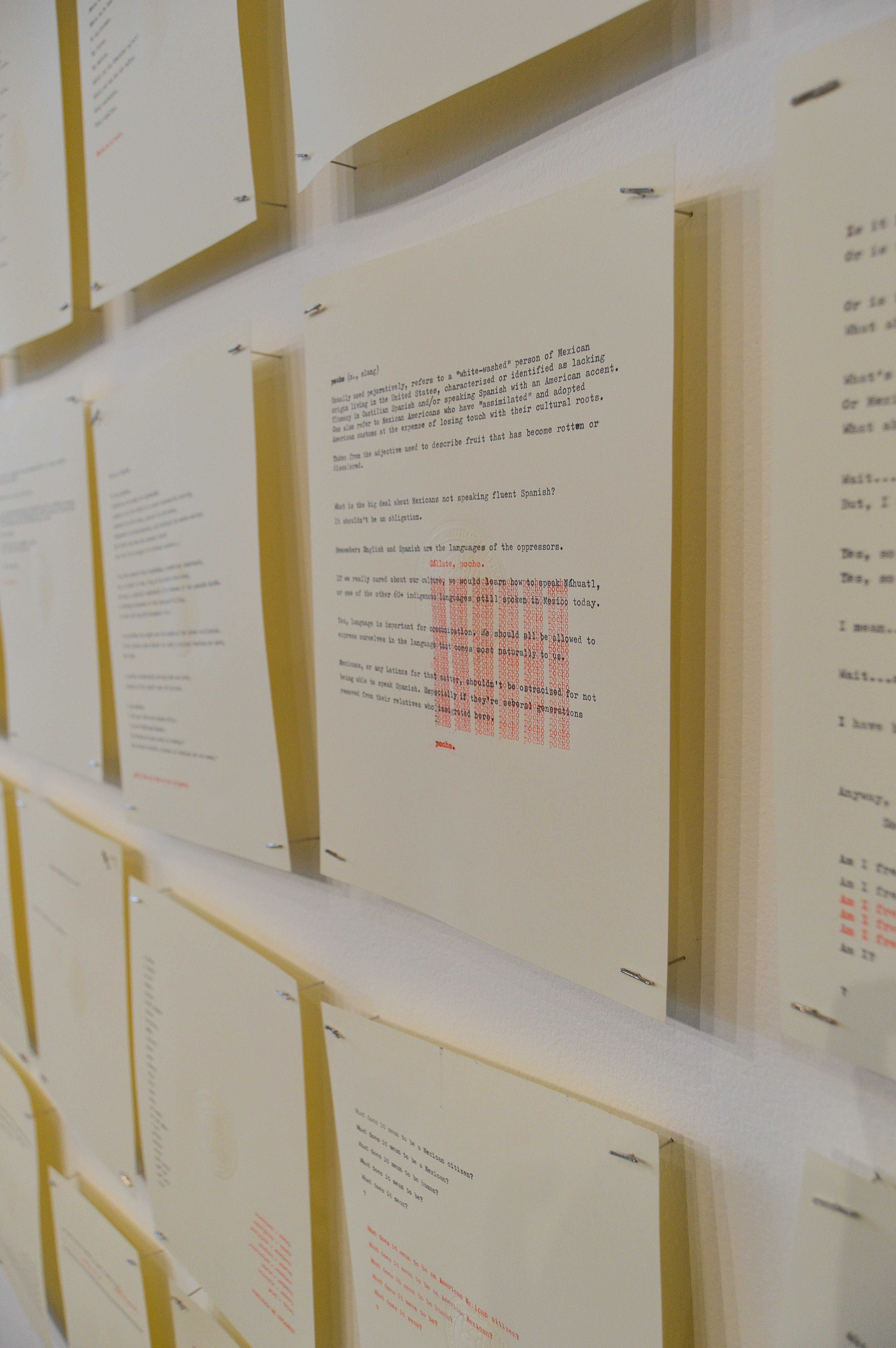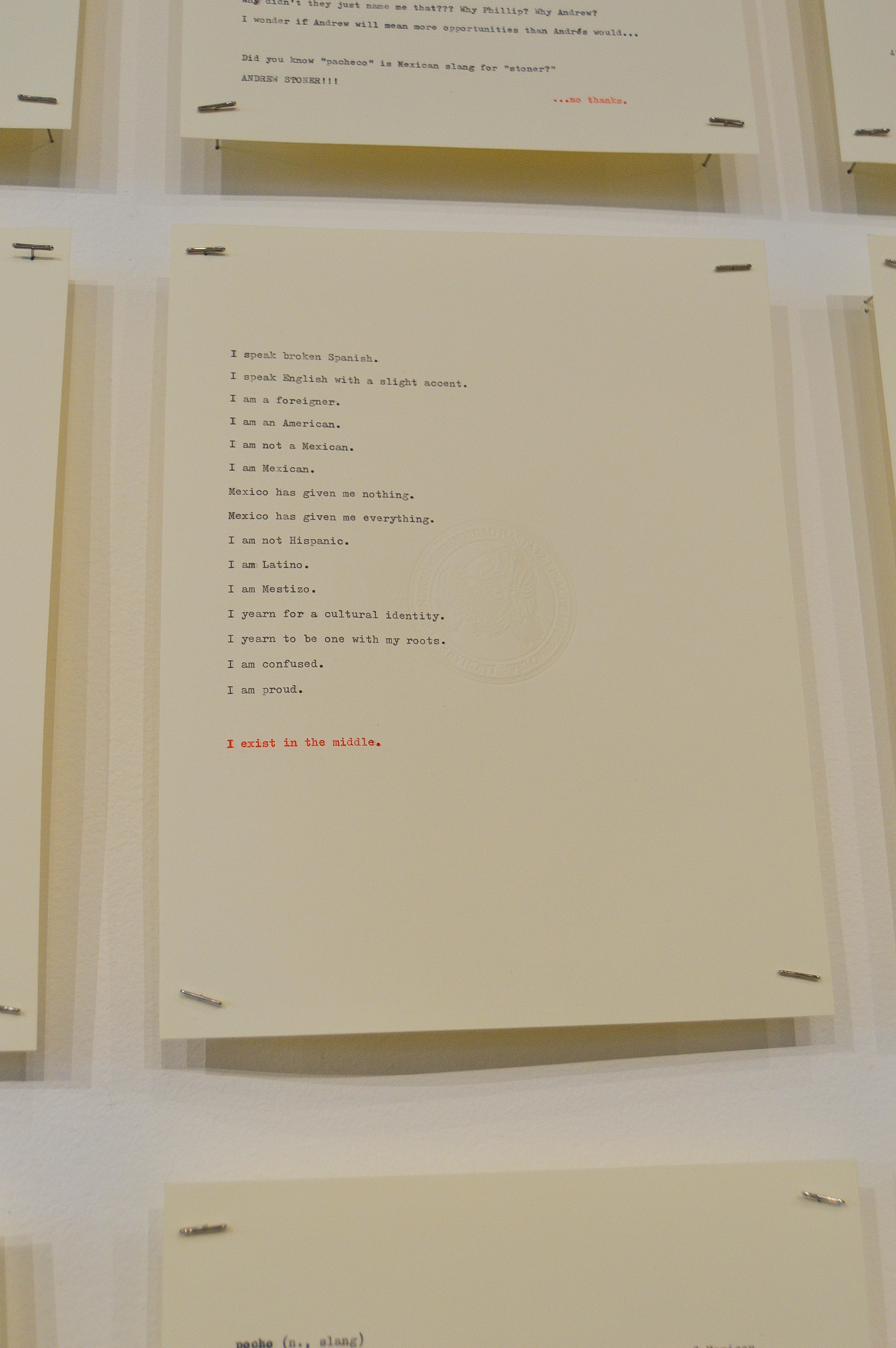What does it mean to be American? What does it mean to be an American? What does it mean to be? What does it mean?
Existing in-between two seemingly opposing cultural identities begs these kinds of questions to be asked. As a person of Mexican descent born and raised in the United States, having roots several generations down the line since the journey from the motherland, I constantly question my cultural identity and my place in a society that seems to be shifting toward a growth of right-wing nationalism. Often times I, and people who share my identity, feel a pressure from both sides—we are “too American” for Mexicans, “too Mexican” for Americans—resulting in an identity crisis.
This installation is essentially the physical manifestation of that identity crisis. Explorations of what it means to be American, what it means to be Mexican, what my place is in the middle of these two pillars of cultural character, and the detriments of cultural identities tied to nationalism are sprawled across hand-typed pages. Incorporating elements of design and art, Document (n.) (v.) is the culmination of my two degrees, an unpacking of my thoughts and experiences as a third-generation Mexican American, and an existential exploration of an inherently political cultural identity.
Document (n.) (v.) on display at SAIC's 2017 MFA Show.


Objects of Consumption
The thesis began as an exploration into everyday objects and objects of consumption, how these objects occupy the space we live in and affect the bodymind, and how they lend themselves to inserting or layering personal and cultural narratives causing the object to shift from the mundane to the sublime. This stemmed from my own personal habit of collecting (and hoarding) objects after consuming them, ranging from bottles to magazines to cigarette packs.
The objects of interest attempt to strike a balance between banality and novelty—this balance is achieved when the object contains an inherent narrative while maintaining the potential for assigning meaning. This potential can be recognized through an understanding of the object itself and through examining the roles the objects can and do play in our lives. The objects lend themselves to be assigned meaning by way of memory—they can help us recall memory through several channels including neurolinguistic programming, haptic and tactile qualities, and other sentient modes.


Coca Mexicana
The Mexican Coke bottle was perhaps the object that contained the most potential for this exploration as its inherent identity is ripe with social, cultural, and political commentary. The bottle itself exists in a liminal state—that is, it straddles the threshold between banality and novelty. As a mass-produced container for an ingestible product manufactured by an American multinational corporation, the object is commonplace. As a thick glass bottle with an enamel label containing a distinct variant of a familiar carbonated drink—one that is surrounded with folklore, nostalgia, and cultural significance—the object is specific. The object possesses an inherent sociocultural identity with which its users can identify and associate. The object in numbers exists in quantitative and qualitative multiplicities, having the ability to convey meaning through an accretion of the object itself as well as a potential to layer various narratives.
A bottle of Mexican Coke, for the intent of the installation, was the three-dimensional manifestation of the immigrant, positing the relationship immigrants have with the border and what it means to traverse that border into a society that benefits from its cultural capital. As a sculptural object, the Mexican Coke bottle holds a special place for Mexicans—both in the homeland and for members of the Mexican-American diaspora—and in American consumer culture as an object of cultural importance. Mexican Coke has become almost a fetishized object in the United States, popularized in hipster culture and at times boasting outrageous prices (like $5.00 a bottle in one NYC restaurant).
The use of the bottles in the installation was a poetic gesture above all else. Empty bottles represent the consumption of a culture followed by the discarding of the container that housed it, embodying a criticism of American culture being notorious for appropriating—and even bastardizing—a culture without regard for the people who carried it with them to this country. In placing them in the shape of the US-México border, a wall was built, simultaneously satirizing and challenging the idea that a wall is an effective be-all and end-all solution to immigration policy reform. By facing them so that each bottle displayed “NO RETORNABLE” towards the north side of the border, a larger political message sits at a micro-level that asserts self-preservation in a social climate that requires assimilation as the price for inclusion.


SPECIAL THANKS
Jacob Ristau
Stephen Farrell
Hannah Pivo
Luna Vital
Marcela Ponce
Memo Bayona
Karla Guerra
Kristian Guerra
Mika Sakai
Cathie Ruggie Saunders
Eduardo Pacheco
Rosanne Ayala
Gloria Pacheco Edgar
Ann Tyler
Geoffrey Alan Rhodes